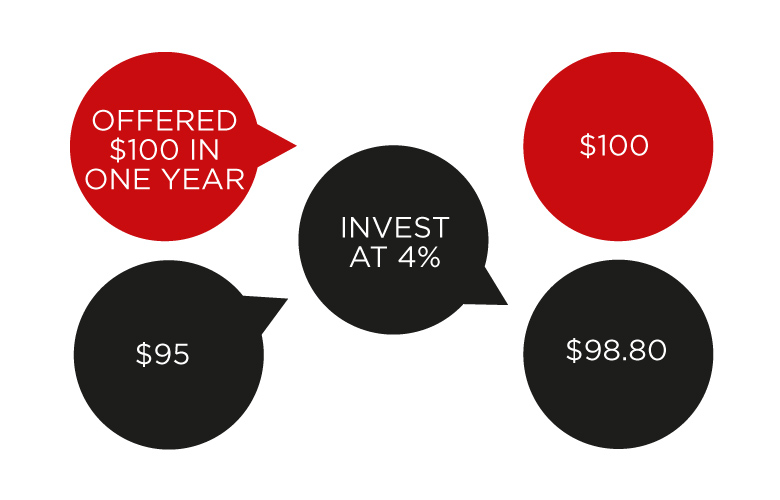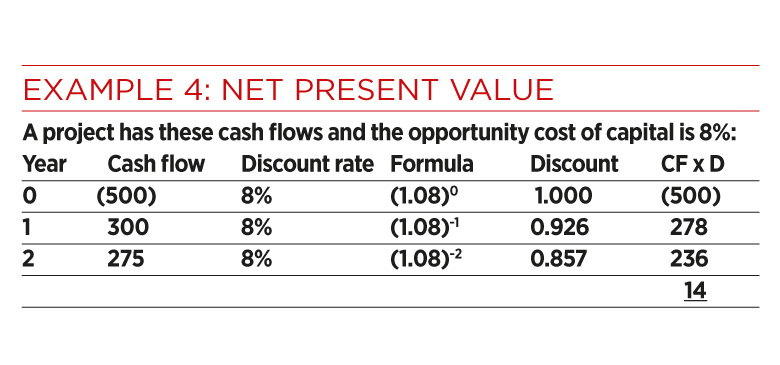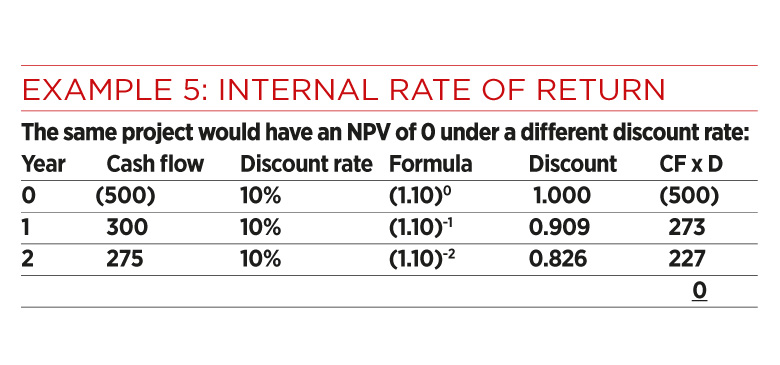
Discounted cash flow (DCF) is an evaluation tool. Evaluation lies at the heart of all business and especially at the heart of treasury. Business is about investing in projects for a future return and DCF is the purest technique to assess those future returns from any project. It is, therefore, an investment appraisal technique for individual projects as well as a valuation technique. It can be used to value individual cash flows, project cash flows and financial instruments, as well as whole companies.
There are many pretenders to the throne of DCF. For investment appraisal, other common techniques include payback and return on capital employed (ROCE). For company valuation, multiples are also a very common technique and can complement DCF techniques.
The crux of DCF is that money received today is worth more than the same money received in the future. This is called the ‘time value of money’. It allows a manager to choose between alternative cash flow scenarios (for example, to invest or not), or to decide when two cash flows are equivalent.
A treasurer can choose to receive $95 today or $100 in one year’s time. If $95 were received now, it could be invested at 4% per annum. $95 invested at 4% will result in receiving $98.80, so all things being equal, the treasurer would choose $100 in a year’s time. A DCF calculation has been done.

We could go on to work out the break even and decide what is the equivalent today of $100 in one year’s time.
The break even is calculated as follows: P x (1 + r)-t, where P is the principal, r is the interest rate and t is time. 100 x (1.04)-1, which is 96.15 So, if more than $96.15 were received, it would be worth accepting the lesser amount today.
In this case, we have used a ‘discount rate’ to make a valuation. The best way to view a discount rate is as an ‘opportunity cost’, so it is what the money would earn if it was not used in this project.
We have shown the classic calculation, but a useful alternative to understand is the ‘continuously compounded’ version, which is: P x e-rt, where e=2.71828 (actually a mathematical constant that appears frequently in many growth patterns), r is the interest rate and t is time. This version can be manipulated more easily in complicated financial calculations, but does assume that interest is received continuously over the period.
The treasurer can also calculate the DCF as follows: 100 x e-0.04 x 1, which is 96.08
These calculations can be expanded to all manner of cash flows. The usual analysis is called ‘ungeared’ and includes the free cash flows to the firm, ie profit, depreciation, movements in working capital and taxation. It is a cash flow and not an accounting analysis. Past cash flows and financing cash flows are excluded. Ungeared analysis is used for project appraisal and can also be used to value a whole enterprise. By way of contrast, a ‘geared analysis’ looks ‘post financing’ and is where cash flows to equity holders only are analysed.
There are two broad DCF techniques. Net present value (NPV) uses a given discount rate. Internal rate of return (IRR) calculates a ‘return’, in much the same way as ROCE.

The NPV of 14 is how much richer the firm will be after doing this project, compared with not doing it.

10% is the internal rate of return and can be benchmarked against other investments.
NPV is technically superior to IRR because of inherent assumptions made using IRR.
The same techniques can be used to value financial instruments such as swaps and forward FX transactions and so are a fundamental part of the treasurer’s toolkit. Choosing an appropriate discount rate can be challenging, as can calculating the cash flows, but when overcome, DCF has considerable power to make accurate valuations.
Will Spinney is associate director of education at the ACT.
